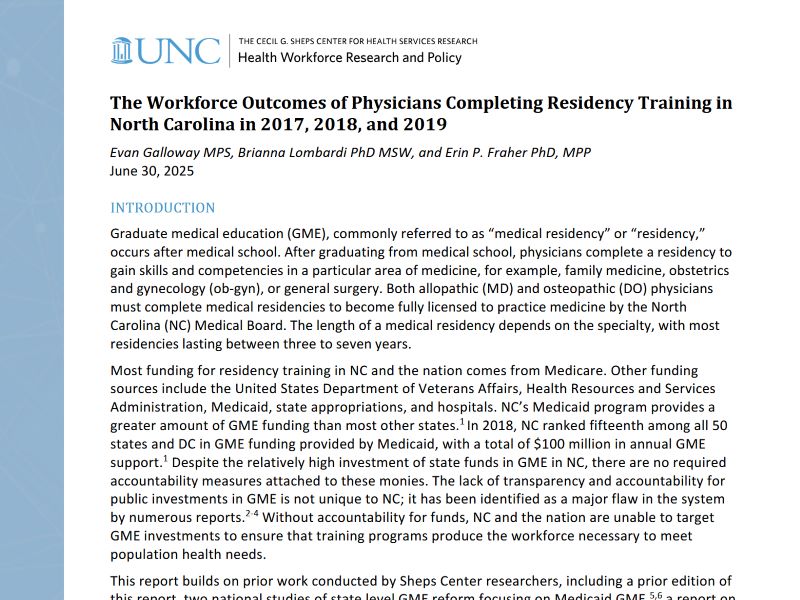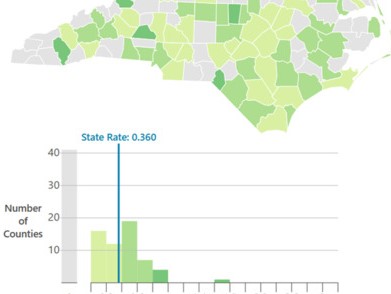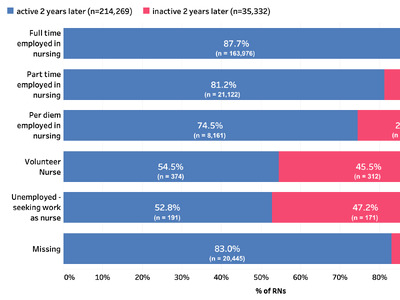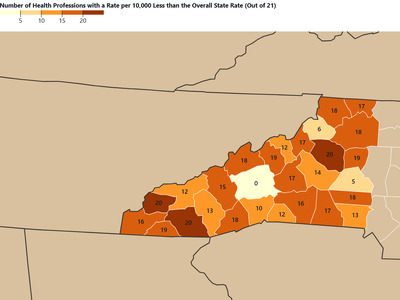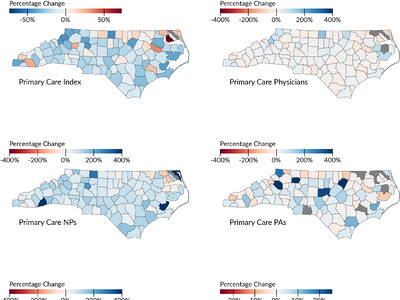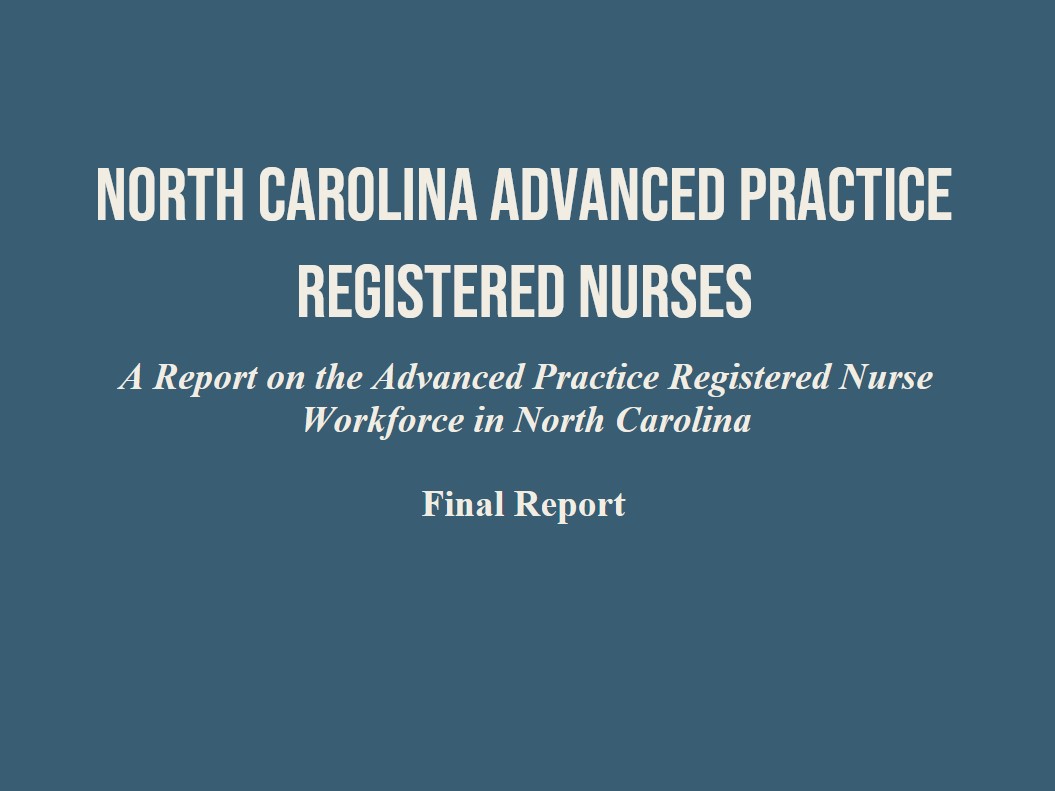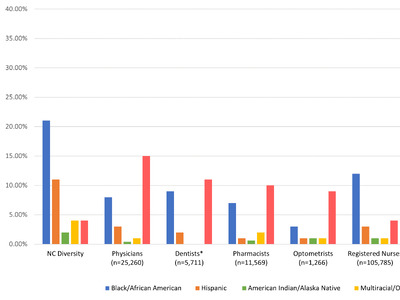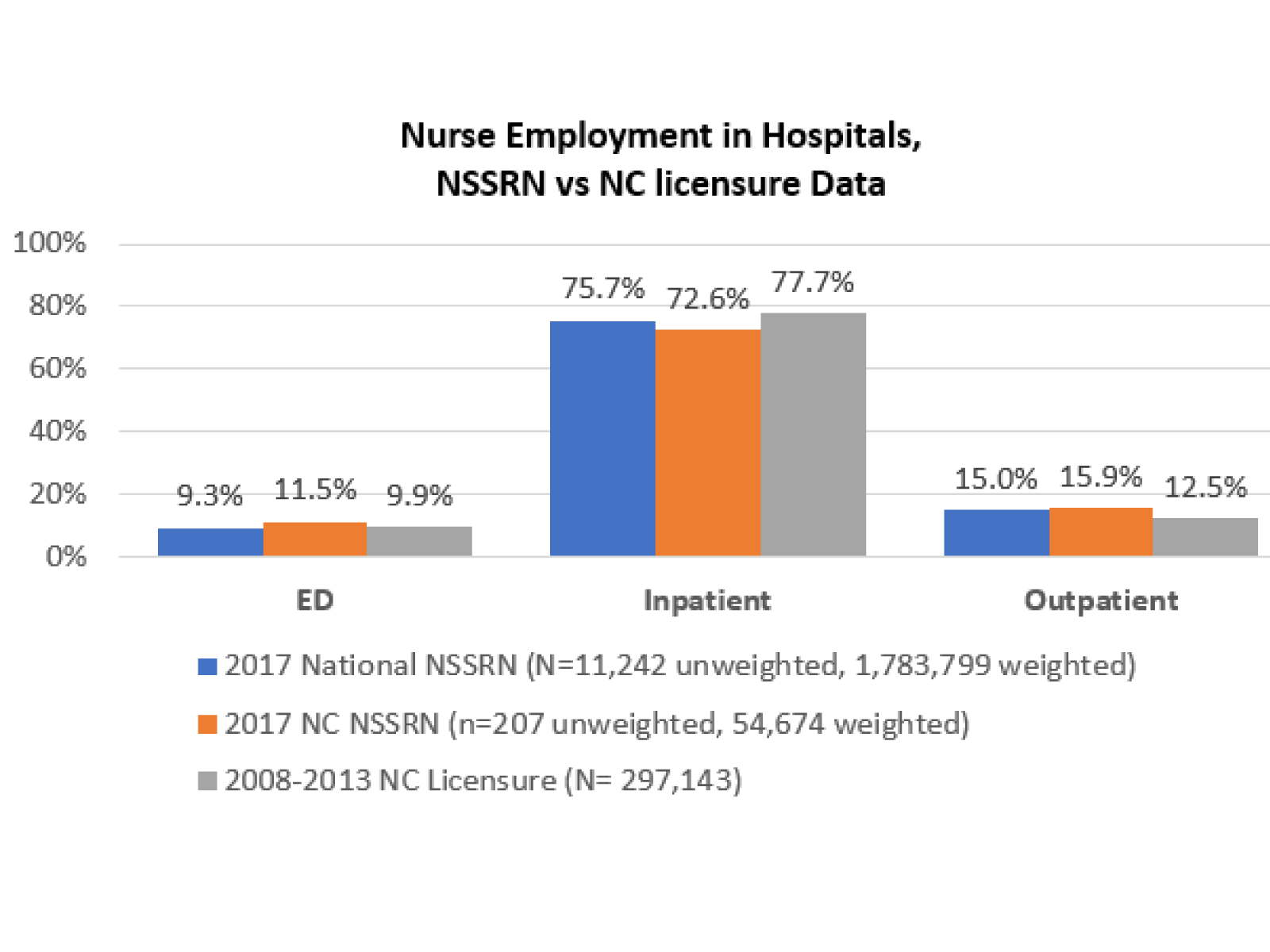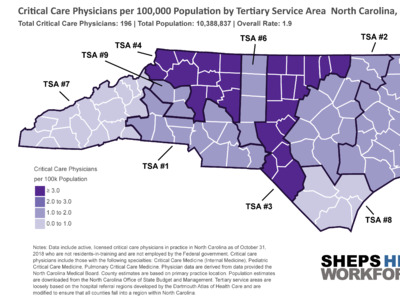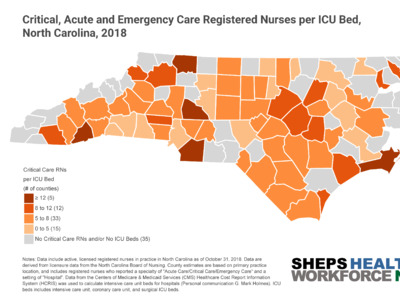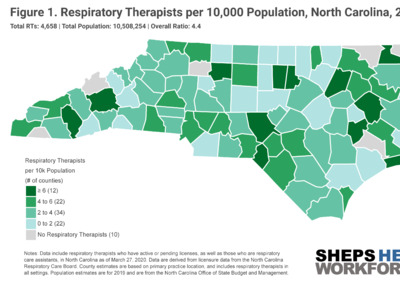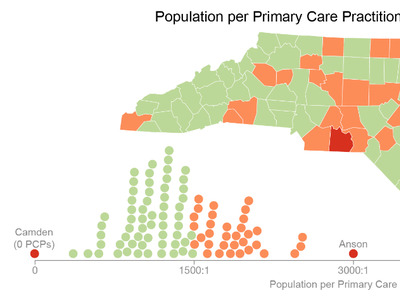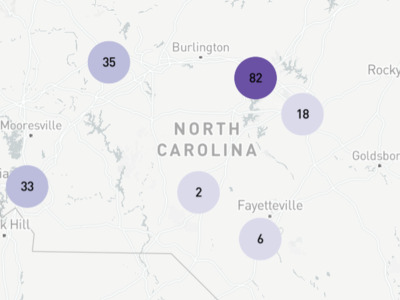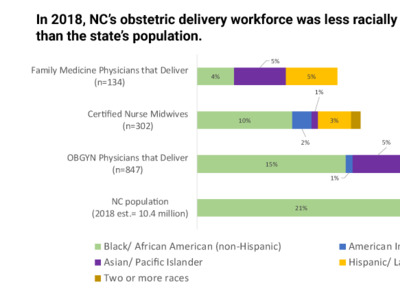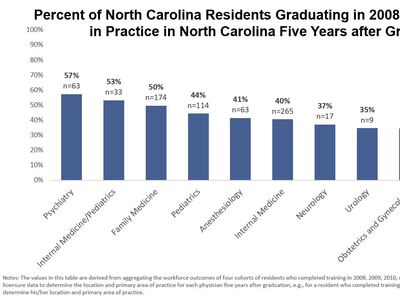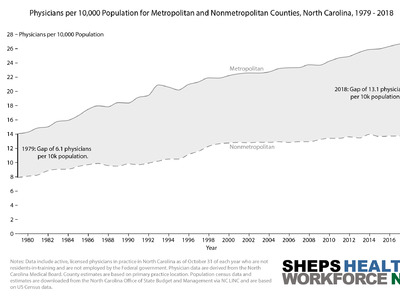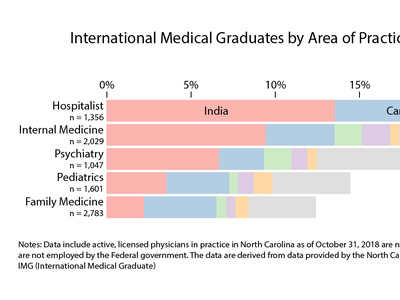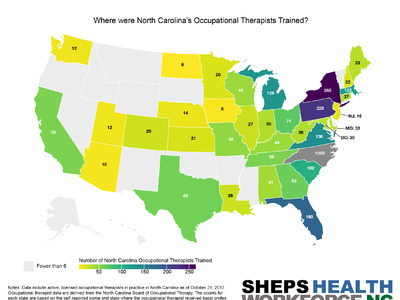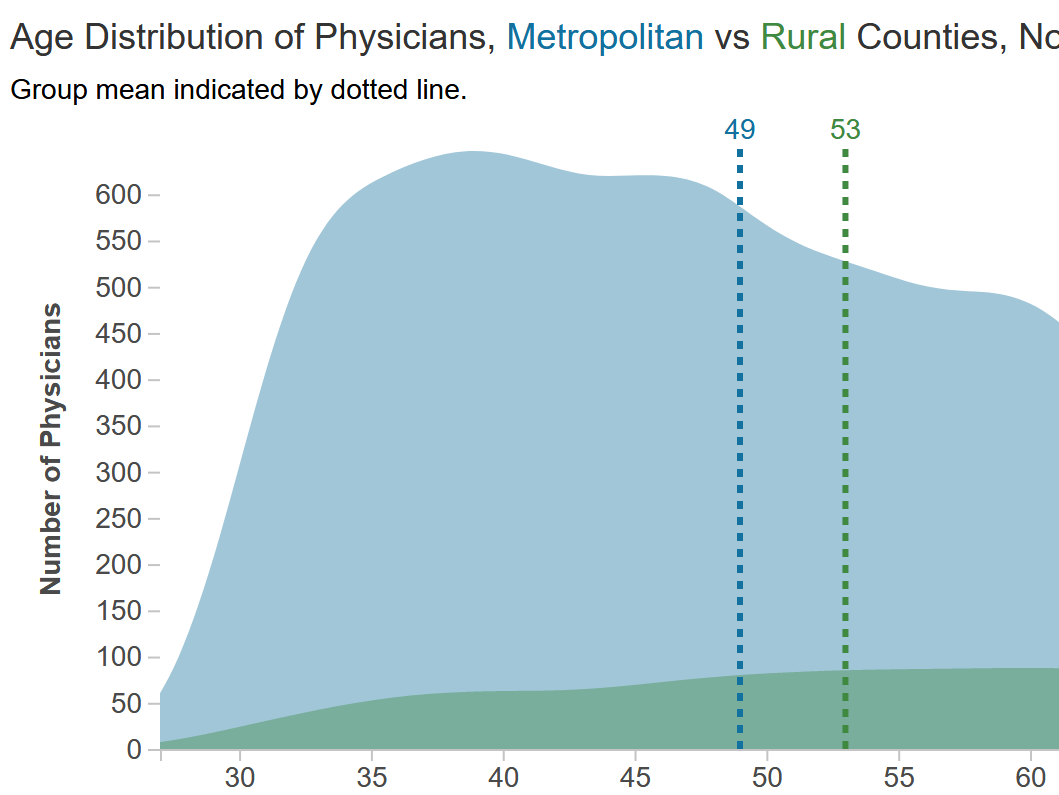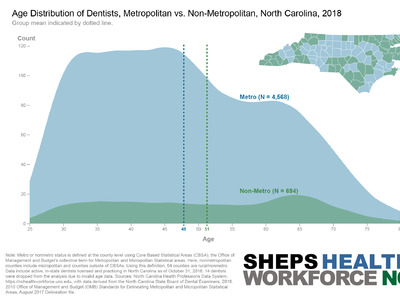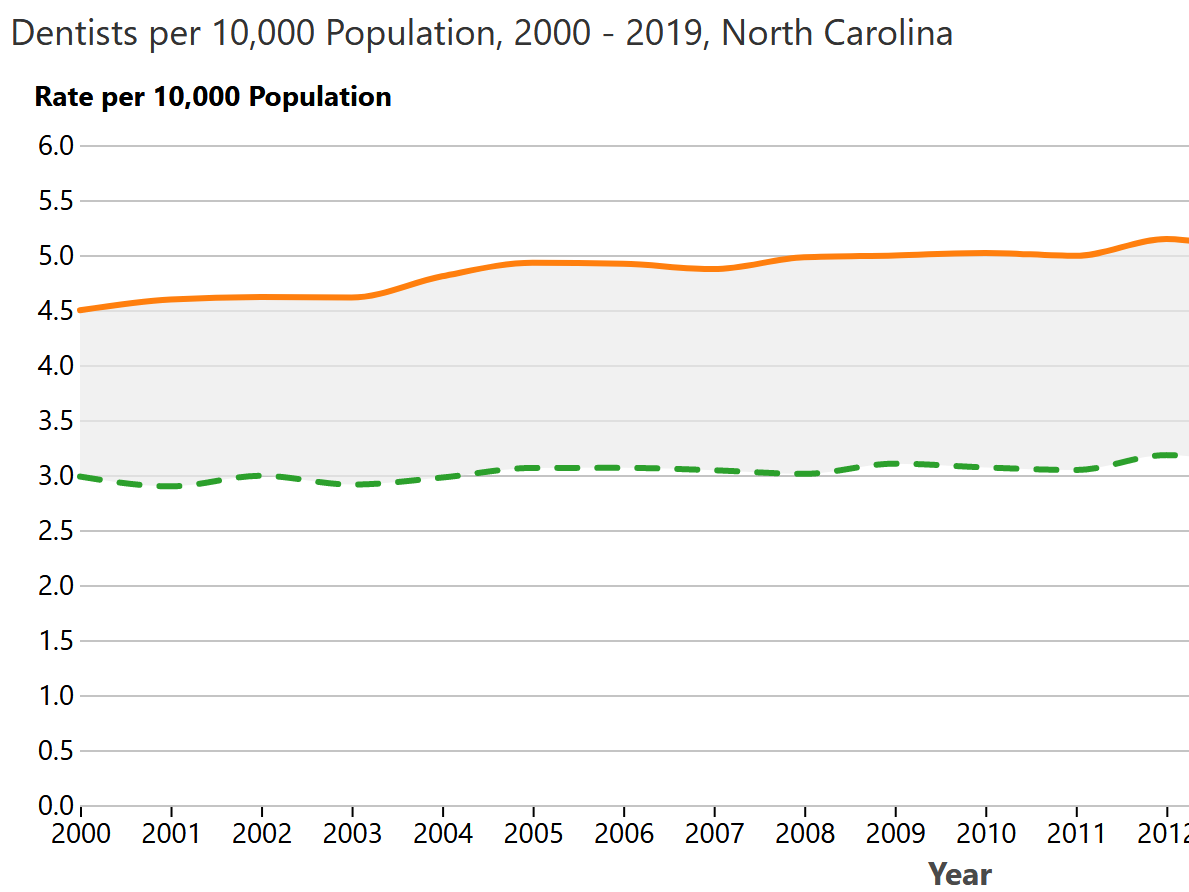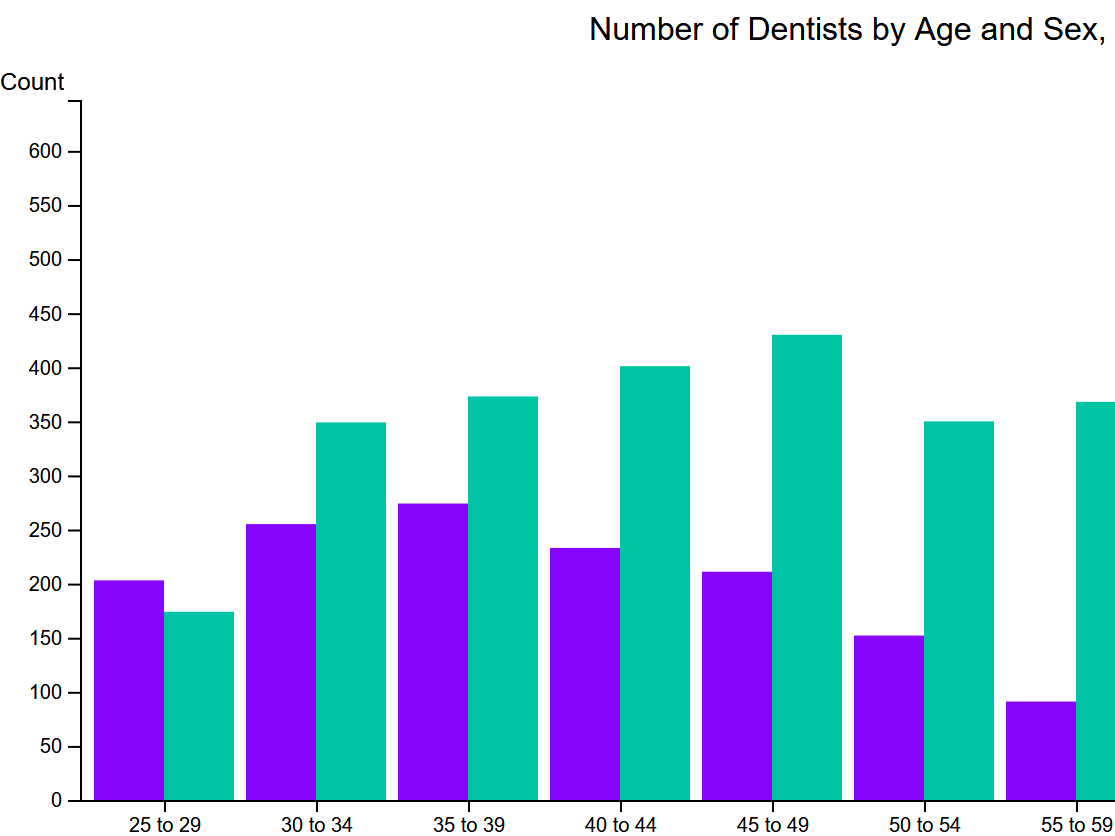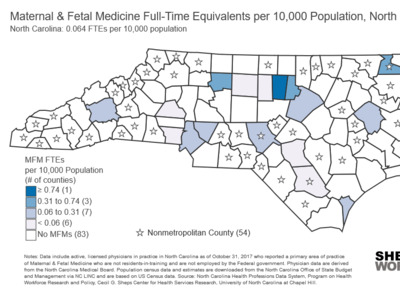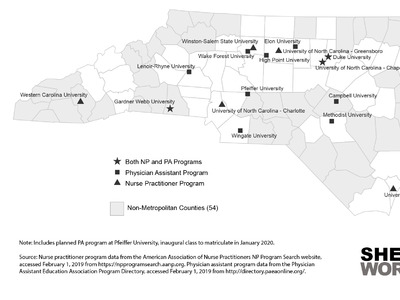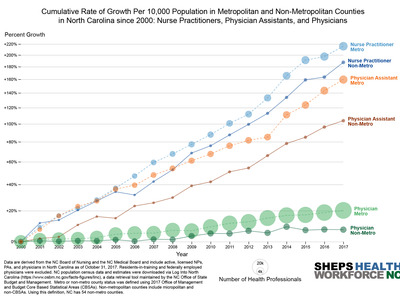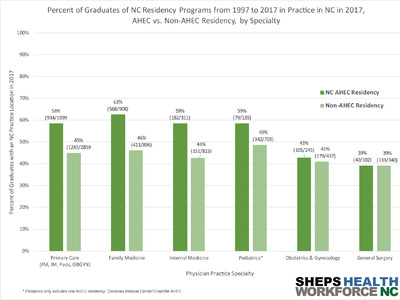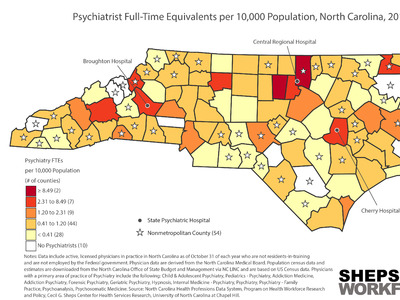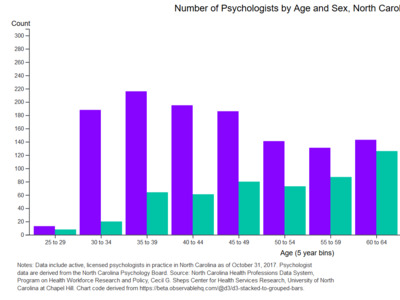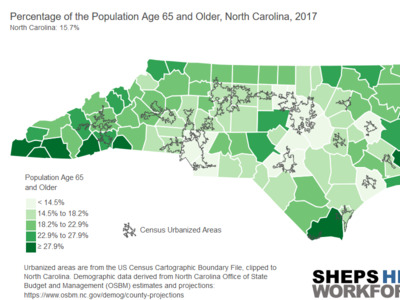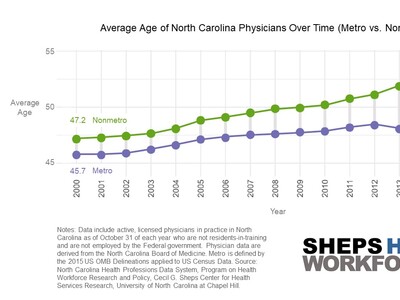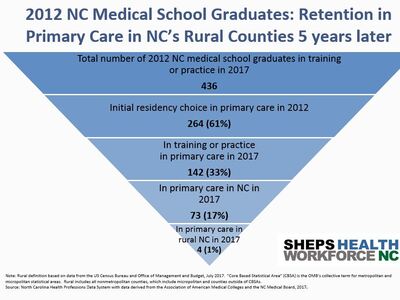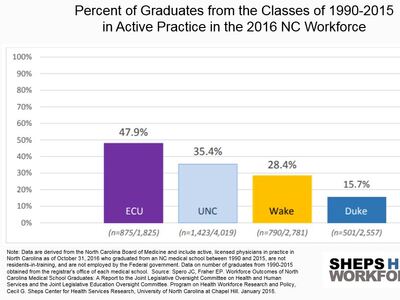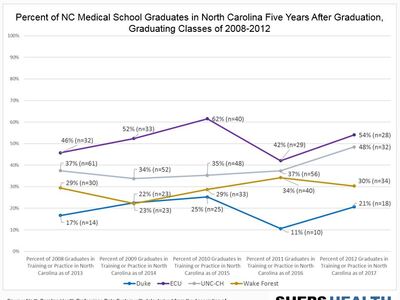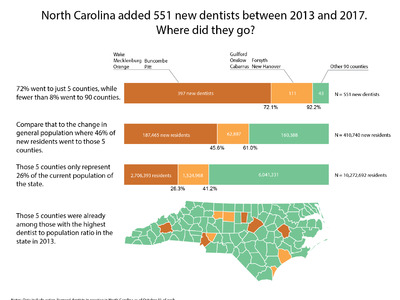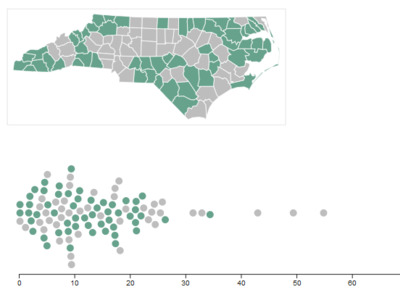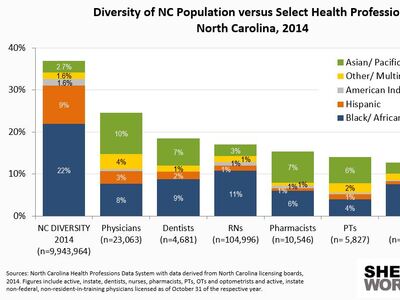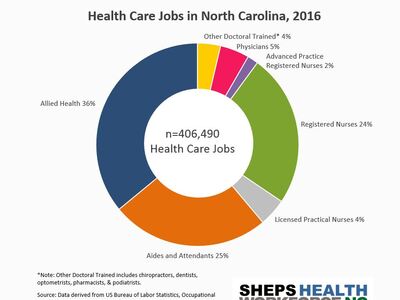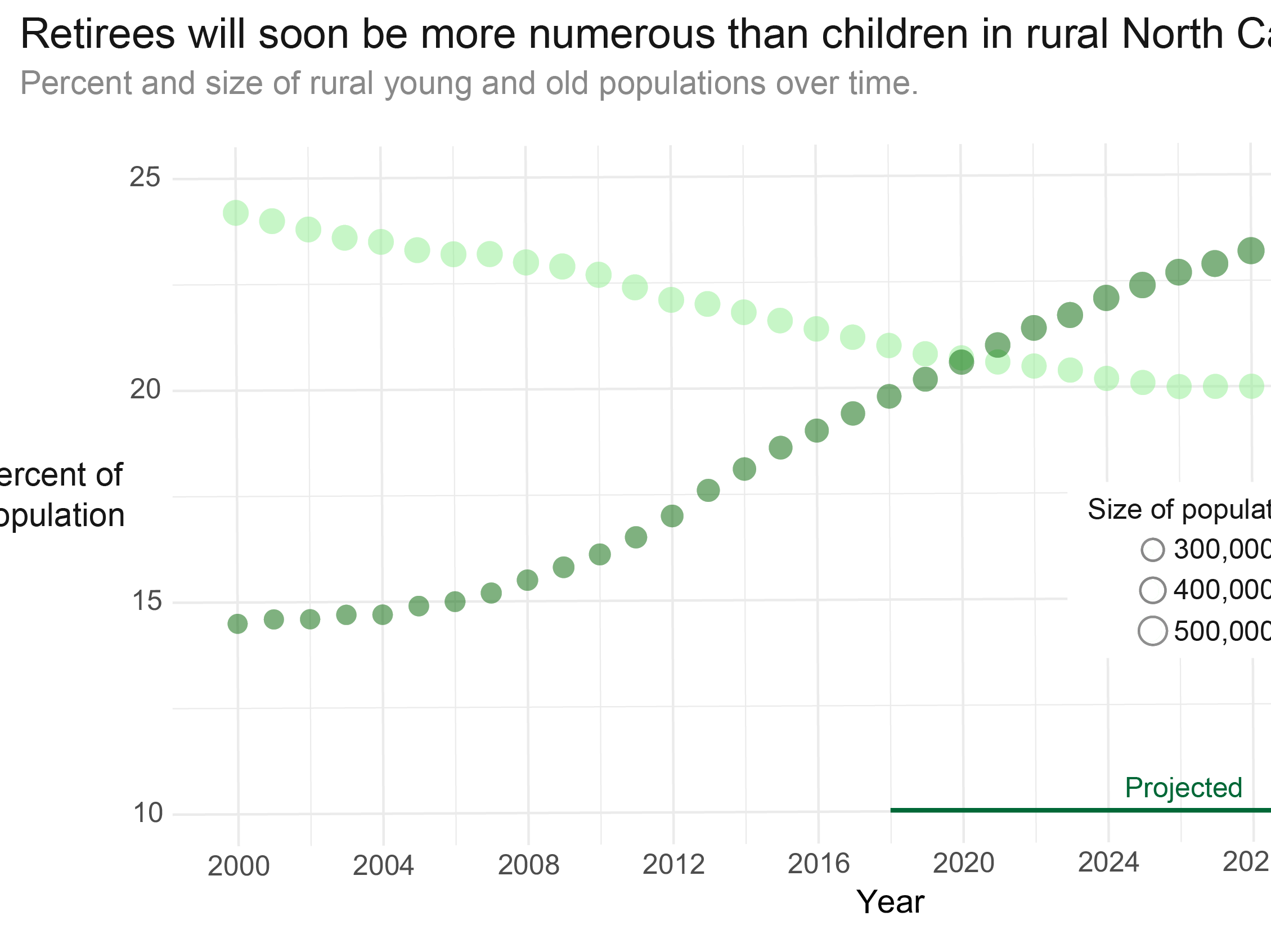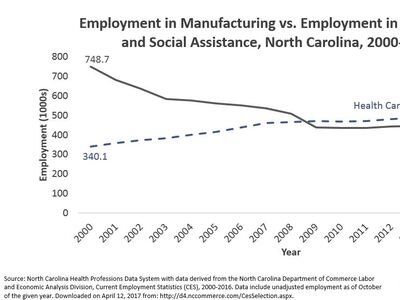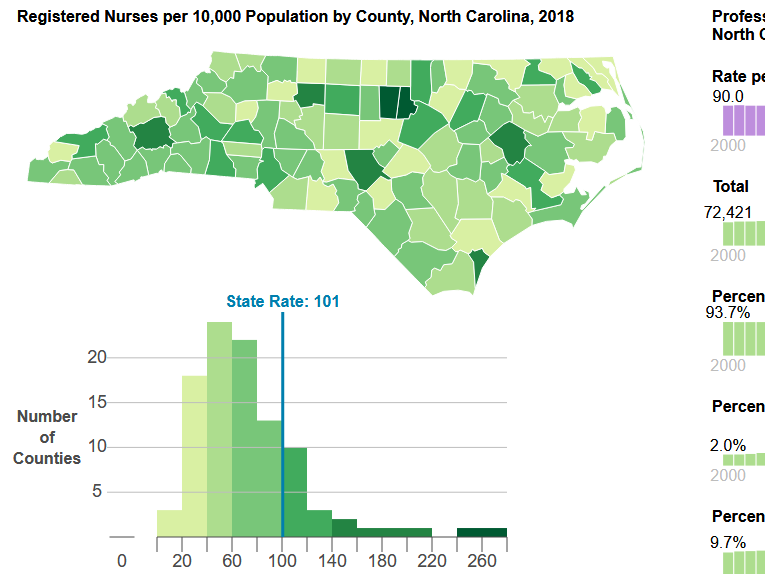History of the Health Professions Data System
Compiled by Priscilla A. Guild and Gordon H. DeFriese Excerpted from Smith L, Fraher E, Pirani M, et al. A Twenty-Year Profile of Trends in Licensed Health Professions in North Carolina: 1979-1998. October 2000.
In 1973, the Division of Education and Research in Community Medical Care of the UNC Chapel Hill School of Medicine approached the Cecil G. Sheps Center for Health Services Research of the University of North Carolina at Chapel Hill with a request that the Center begin efforts to compile a statewide database on physician personnel practicing in North Carolina. Funds were made available to the Center from the School of Medicine to facilitate the compilation of data from the Physician Masterfile of the American Medical Association and the North Carolina State Board of Medical Examiners (now the North Carolina Medical Board). Then, in 1974, the National Center for Health Statistics (NCHS) solicited proposals from every state for the development of various components of the Cooperative Health Statistics System, with a statewide health manpower statistics component being one of these subsystems. The North Carolina State Center for Health Statistics asked the Sheps Center staff to assist with the preparation of the several proposals required for North Carolina to participate in this national program. The Sheps Center took the lead in preparing both the Health Manpower and the Health Care Facilities components of the North Carolina application. Both components, in addition to the Vital Statistics component prepared by the State Center, were funded.
The Sheps Center then undertook to work with the 14 independent health professional licensure boards to establish a common data set on all 20 licensed health professions in North Carolina. In this same period of time, the North Carolina Area Health Education Centers Program was being created through the award of federal funds from the Federal Bureau of Health Professions. Subsequently, the North Carolina General Assembly appropriated state funds for the further support of the North Carolina AHEC Program, and in this appropriation were funds for the development and maintenance of a statewide information system by which the supply and distribution of licensed health personnel could be tracked. It was these funds made available through the initial state appropriation to the AHEC Program which first made possible the annual analysis and dissemination of health manpower data. Thus, the funds from the Cooperative Health Statistics System, plus the AHEC funds for analysis and dissemination, were combined to enable the North Carolina health manpower information system to become a reality. This system, from the beginning, has been a joint effort of the Sheps Center, the NC State Center for Health Statistics, and the North Carolina Area Health Education Centers Program. Federal funding from the Cooperative Health State Statistics System ended in 1981. For the first year after this funding ended the North Carolina State Health Planning and Development Agency supplemented the AHEC dollars to continue the collection and dissemination of the health manpower data and the responsibility for the health facilities data went back to the North Carolina Division of Facility Services in the Department of Human Resources.
During this time, the North Carolina Hospital Association took the initiative to ask the Duke Endowment to facilitate the continuation of this system for a two-year period so that alternative funding arrangements could be explored. The Duke Endowment made the necessary funds available, through the North Carolina Hospital Foundation, to support the continuation of efforts of the manpower statistics system. During this two-year period, a special change budget request through the University of North Carolina General Administration was approved which permanently established a unit for Health Policy Analysis within the Cecil G. Sheps Center for Health Services Research at UNC-Chapel Hill, a major function of which was the annual accumulation of statistical data on licensed health professionals in the state. It is this continuing funding, plus the ongoing support of the North Carolina Area Health Education Centers Program, which enables the current system of health professional statistics for North Carolina to be available for health planning and program development purposes. Through these efforts of the independent professional licensure boards, key state governmental agencies, the University of North Carolina, the North Carolina Hospital Association, and the Duke Endowment, our state has one of the most comprehensive and longest term systems of health professional data in the nation. All of these organizations deserve our appreciation for making certain that this valuable informational resource is available and accessible to all individuals and organizations who need this information for planning or program development purposes.



